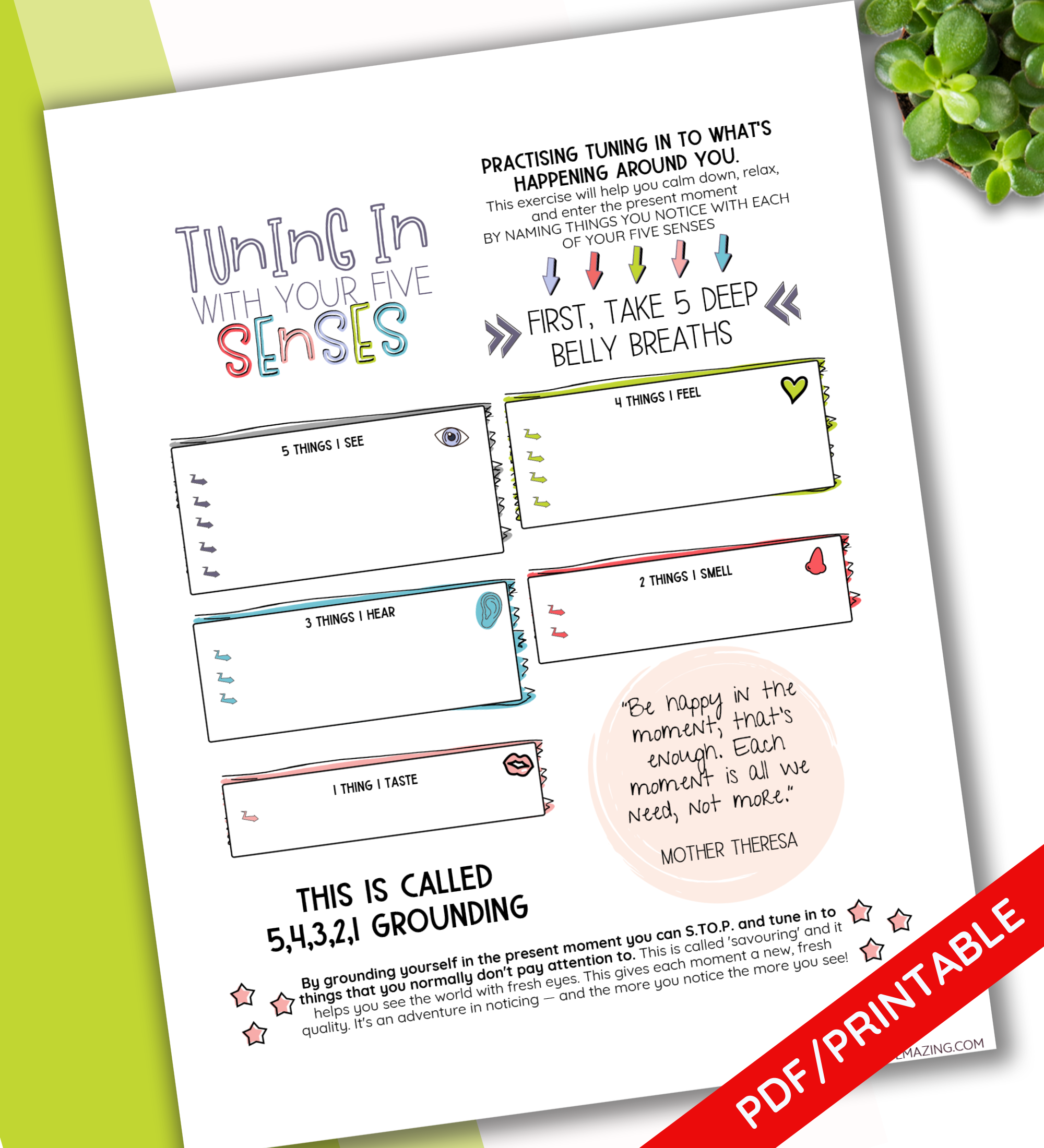This post is all about grounding techniques for kids, a helpful tool in managing stress and anxiety. Grounding exercises can be especially beneficial for children who may struggle with overwhelming emotions or find it difficult to calm themselves down. These techniques are simple, easy to follow, and can be done anywhere, anytime. Let’s explore some of the most effective grounding exercises for kids!
The Tree Grounding Technique
 One of the popular grounding techniques is the Tree Grounding Technique. This exercise helps children connect with nature and create a sense of stability. To begin, ask your child to imagine themselves as a tree with roots growing deep into the ground. Encourage them to feel the support and strength of the earth beneath them. This visualization can help them feel grounded and centered.
One of the popular grounding techniques is the Tree Grounding Technique. This exercise helps children connect with nature and create a sense of stability. To begin, ask your child to imagine themselves as a tree with roots growing deep into the ground. Encourage them to feel the support and strength of the earth beneath them. This visualization can help them feel grounded and centered.
5-4-3-2-1 Grounding Exercise
 Another effective grounding technique for kids is the 5-4-3-2-1 exercise. It involves engaging the senses to refocus the mind and bring attention to the present moment. Ask your child to name:
Another effective grounding technique for kids is the 5-4-3-2-1 exercise. It involves engaging the senses to refocus the mind and bring attention to the present moment. Ask your child to name:
- 5 things they can see
- 4 things they can touch
- 3 things they can hear
- 2 things they can smell
- 1 thing they can taste
This exercise helps children redirect their thoughts from anxious or overwhelming emotions to their immediate surroundings, promoting a sense of calm and grounding.
54321 Grounding Exercise
 The 54321 grounding exercise is similar to the 5-4-3-2-1 exercise but focuses primarily on the senses. To practice this exercise, guide your child through the following steps:
The 54321 grounding exercise is similar to the 5-4-3-2-1 exercise but focuses primarily on the senses. To practice this exercise, guide your child through the following steps:
- Identify and name 5 things they can see around them
- Acknowledge and name 4 things they can touch
- Notice and name 3 sounds they can hear
- Recognize and name 2 scents they can smell
- Savor and name 1 taste they can experience
This exercise helps children become more aware of their surroundings, diverting their attention from worries and anxiety.
3 Part Grounding Technique
 The 3 Part Grounding Technique is a simple yet effective exercise that helps kids feel connected to their bodies and the present moment. It consists of three steps:
The 3 Part Grounding Technique is a simple yet effective exercise that helps kids feel connected to their bodies and the present moment. It consists of three steps:
- Grounding the body: Encourage your child to stand tall, feel their feet firmly planted on the ground, and take a few deep breaths.
- Grounding the senses: Have your child use their senses to become aware of their surroundings, noticing what they see, hear, feel, and smell.
- Grounding the breath: Teach your child to take slow, deep breaths, counting to four while inhaling and exhaling. This can help them find a sense of calm and relaxation.
By practicing the 3 Part Grounding Technique, children can learn to regulate their emotions and find inner peace during stressful times.
 These are just a few examples of grounding techniques that can benefit kids. It’s important to remember that different techniques work for different children, so encourage them to try out various options and find what resonates with them the most.
These are just a few examples of grounding techniques that can benefit kids. It’s important to remember that different techniques work for different children, so encourage them to try out various options and find what resonates with them the most.
By incorporating grounding exercises into their daily routine, children can develop healthy coping mechanisms and better manage stress and anxiety. These techniques empower them to take control of their emotions and create a sense of stability and calmness.
Remember, grounding exercises are not only for children. Adults can also benefit from these techniques as they provide a moment of pause and mindfulness in our busy lives. So, why not try them out together as a family?
Support your child’s emotional well-being by introducing grounding techniques as a valuable tool in managing stress and anxiety. These exercises can promote resilience, self-awareness, and overall mental well-being for both children and adults alike.